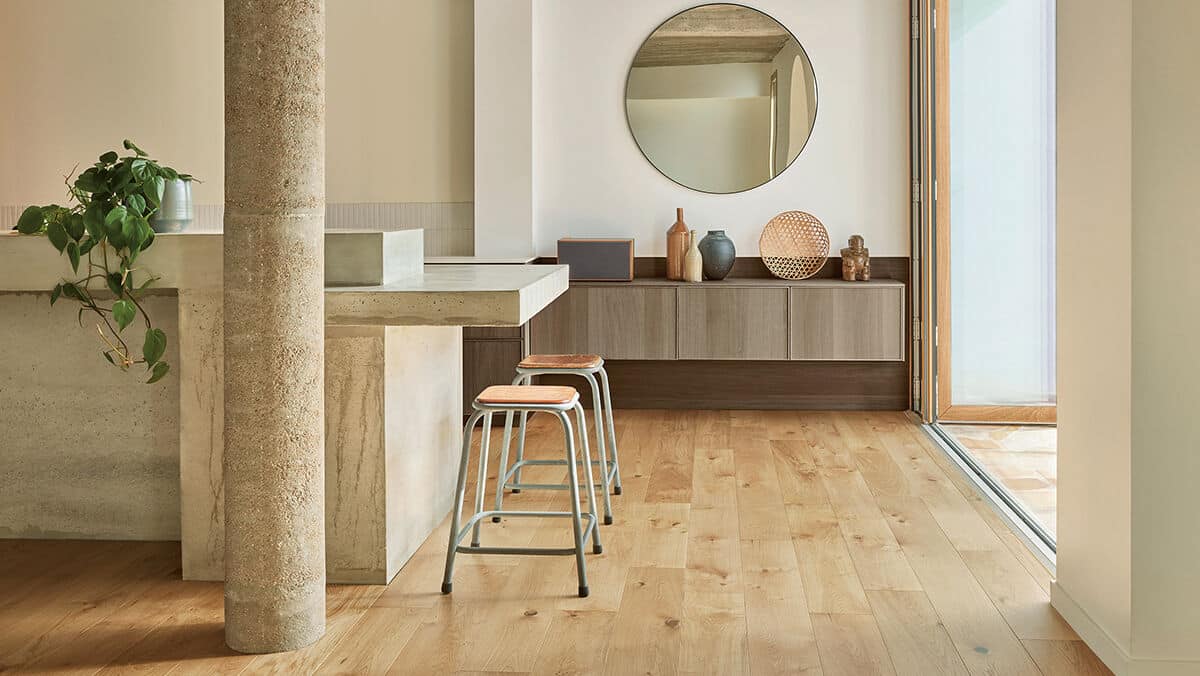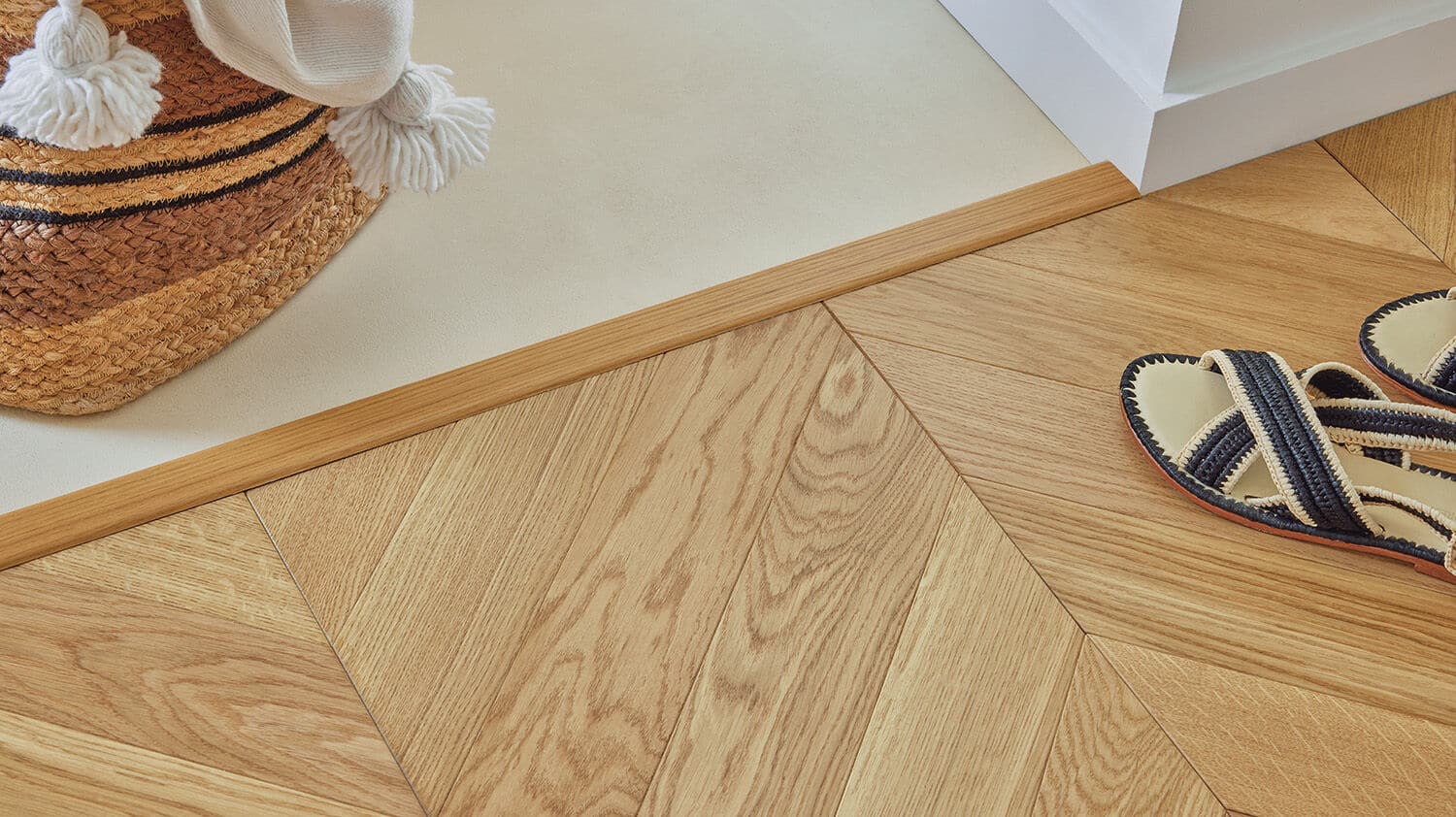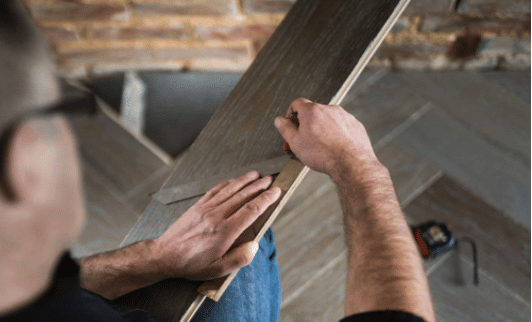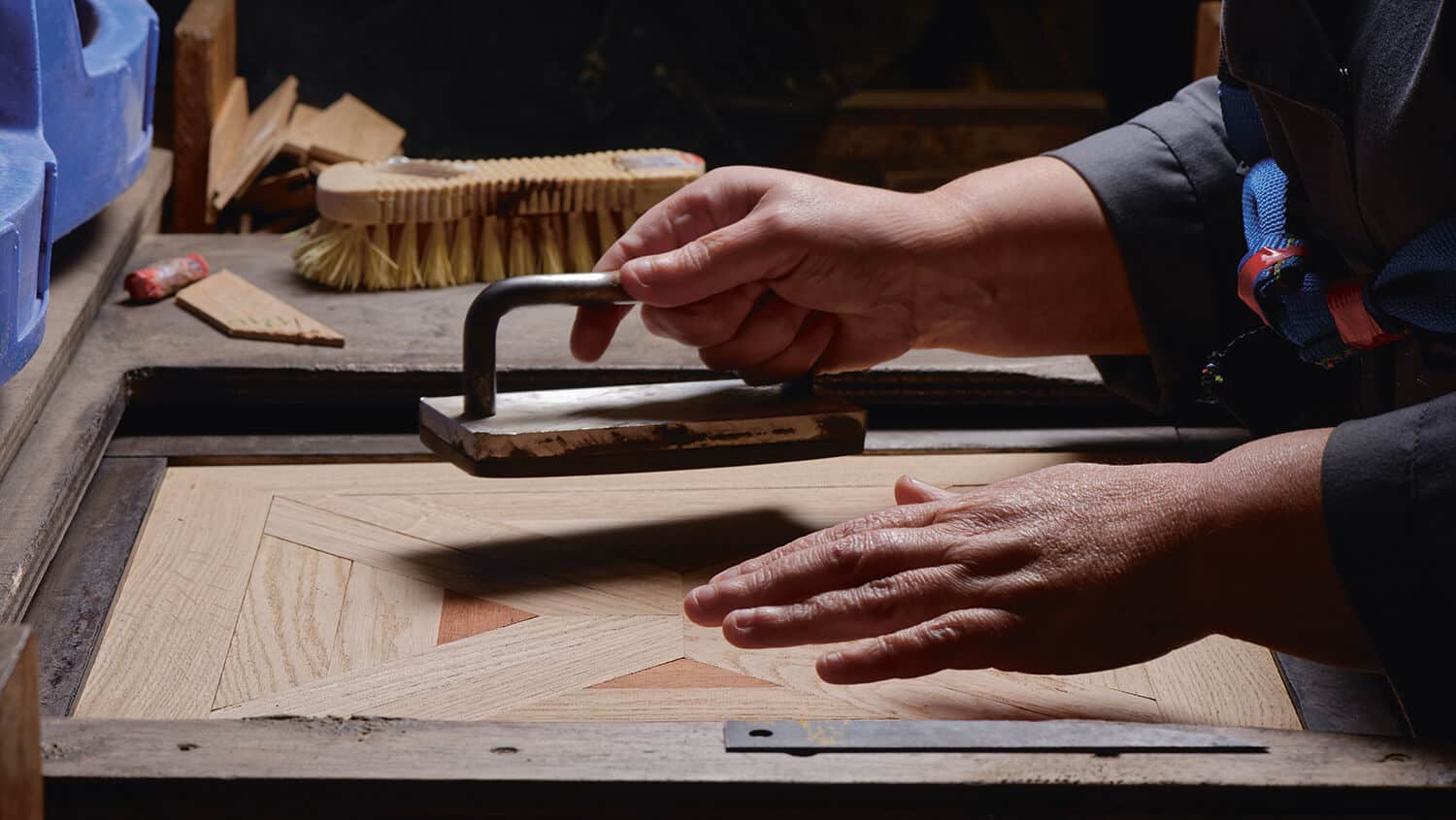Selecting the direction for installing wood floors
Whether your wood floor is floating or glued, there are a few factors to consider before getting started. One of the most common questions is about the direction of laying wood flooring! Most often, we recommend laying the wood floor perpendicular to the room’s primary source of light. However, there are other solutions that could match your decorative desires and interior needs.
Panaget guides you through the basics of wood floor installation, explaining which direction to lay your wood floor depending on your preferences!
Preparation before installing a wood floor
Have you just purchased your wood floor. Now you need to equip yourself with the remaining supplies and the right tools to install your new floor as well as possible!
Preparing the floor before installation
For your wood floor to be perfectly laid, it’s crucial to have a completely flat, clean, and dry surface! To check this, you can use a mason’s level and make sure that bumps and gaps do not exceed 5 mm under a 2 m level and 1 mm under a 20 cm level! Our tip? Before starting the installation, give your floor a final vacuum to ensure its cleanliness.
Supplies to have
Make sure you have expansion spacers that you’ll place around the perimeter of your room. They’ll allow natural expansion of your wood after installation!
Note, if your room is on the ground floor without a crawl space or on a heated floor, you’ll need a vapor barrier film to prevent moisture from damaging your wood floor!
Additionally, the underlay is also essential for floating installation. Depending on the model, it will provide good sound insulation or compensate for level differences.
And for finishing touches, make sure you have baseboards and thresholds that will cover the expansion gap.
Tools for installing wood floors
In addition to the mason’s level, you’ll need a few tools to ensure professional work.
For cuts, have a tape measure for measurements and a carpenter’s pencil paired with a square to mark dimensions on the planks. For perfect cutting, we recommend using a jigsaw or a circular saw.
Finally, for delicate areas, a rubber mallet, a tapping block, and a metal bar will help you assemble your planks properly!
Have you got some concerns about installing your wood floor? Read our complete step-by-step guide to install your floating wood floor.
How to determine the direction in which to install your wood floor
The direction in which you install your wood flooring is related to the main source of light in the room. To showcase your floor, we recommend installing the wood floor in the direction of incoming light.
The most common way to install a wood floor
From a technical point of view, a wood floor is installed parallel to the length of your room to limit wood expansion! It involves minimal cutting and thus minimal waste. However, it’s mainly recommended for a rectangular room.

To visually enlarge your room
We recommend installing parallel to the wall you want to lengthen. For a sense of length in a hallway, install parallel to the longest side. To widen a room, orient the planks parallel to the width.
Professional tip: In a narrow room, avoid using a wood floor color that is too dark, as it may accentuate the narrowness of the room!
Regarding colors, we recommend a light wood floor and dark walls to enhance the depth effect of the installation!
In narrow or poorly lit rooms, prefer light wood floor or those with a satin finish to capture light.

Choosing the direction of your wood floor installation
As you’ve understood, there are several solutions for installing your wood floor. Now it’s up to you to make your choice. To summarize, you absolutely must consider these few criteria:
- The light source in your room;
- The size of your room;
- The shape of your room;
- The desired effect;
- The type of room.
To visualize the final result more easily, you can see the different directions for installing a wood floor in your room using our Imagine by Panaget wood floor simulator! If you still have questions, don’t hesitate to contact our advisers who will provide you with bespoke advice based on your needs!




















